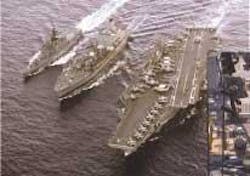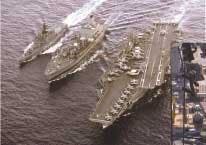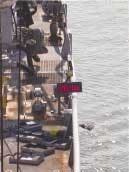Ships' distance becomes easy to see
Because the U.S. Navy wants its ships to be capable of staying at sea for long periods of time, even when far from ports where they can be resupplied, the Navy has come up with underway replenishment techniques in which supply ships or helicopters stock combat ships with fuel, ammunition, provisions, and spare parts. In the case of ship-to-ship transfer, a cargo can be transferred via a trolley on a tensioned wire spanning the gap between ships. The conventional method of keeping track of distance between ships requires a line with evenly spaced knots strung between the vessels, along with intense monitoring by the captain and deck personnel. Maintaining the proper distance between ships during transfer becomes especially difficult in bad weather.
To ease this difficulty, engineers at Laser Atlanta (Atlanta, GA) have developed a laser-based proximity-measurement system that provides a distance readout on a large display, giving instant feedback on distance to the captain of the ship that is being maneuvered. The pulsed time-of-flight rangefinding system has a 904-nm-emitting laser diode as its source; the diode has an emitting area of 300 × 225 µm, which is imaged by 100-mm-focal-length optics onto the target vehicle, producing a square pattern roughly a foot on a side.
The laser is synchronized to a rotating mirror in the optics assembly so that the laser can fire at any combination of points along a scan line. An avalanche photodiode receives the return signal; both range and velocity are computed. Selective buffering of the return signal minimizes problems caused by stormy or foggy weather. Here, the ship in the center is the USNS Tippecanoe; the inset shows the display of the proximity-measurement system.


